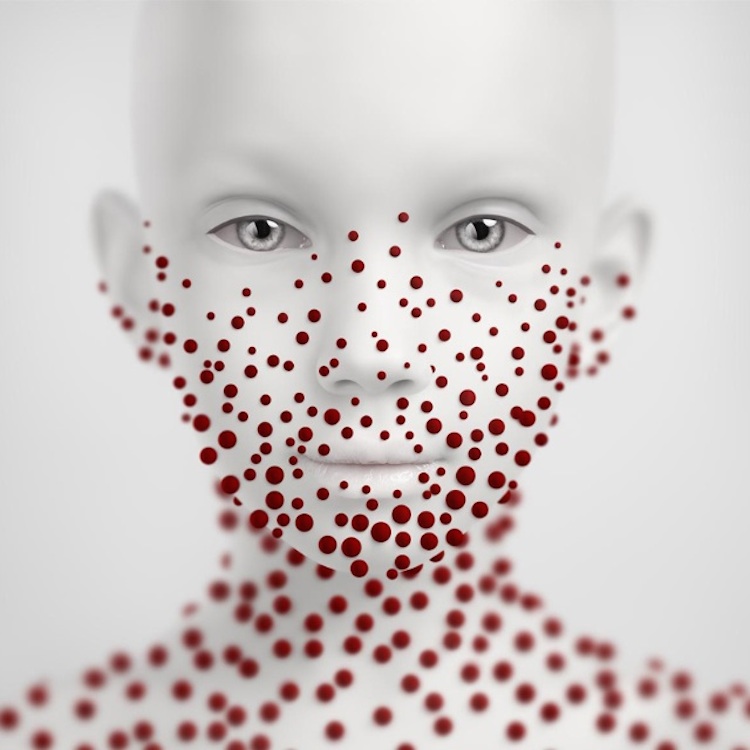MOSCOW — Austere, aloof and coldly erotic, Oleg Dou’s love of porcelain crosses over from sculpture and into the world of photography as models take on the look of his bone china.
His sculptures look like classic porcelain figurines, but it takes time to notice the deformities of the subjects. Children have pig noses and long, slender arms that bend in the wrong way. It feels dangerous. In one of the sculptures two children straddle another child, creating the uncomfortable impression that these mutated creatures chased their friend until they twisted her within their unnatural, powerful arms.

Oleg Dou, Ronald from Toystory Series, 2008, C-print face mounted with acrylic, 180 x 180 cm. Click to see a larger image.
The photography has the same air of danger about it. Charged with eroticism, the pale, powdery look of his digitally-assisted succubi and incubi gives them an aloof, regal effect. They look as though they’d sneer at the touch of any mere mortal. It’s a quiet confrontation, doubly so, I imagine, in Russia. The male models, fey and elfin, seem like a direct challenge to the homophobia in that country. They’re daring the viewer to strike them and, even though they look like porcelain, I feel like the inertia of their scorn is enough to give them the upper hand in such an exchange.
Dou (b. 1983) fetishizes death. His work brings up associations with Victorian or southern gothic attitudes about dying. I saw Night of the Hunter a few nights ago and I’m reminded of the scene where a character discovers a woman’s body underwater. The corrosive part of death is ignored in favor of presenting a body that is instead arrested in time, plucked from life when the woman was at the peak of her beauty. She will be preserved there forever, safe from age and all the other indignities that are heaped upon the living. This sentiment meets more modern attitudes about human representation. Dou speaks of the strange feelings he has around mannequins. This seems like a reference to the notion of the uncanny valley, the unsettling emotion one experiences when the representation of a human being is close to being perfect, but not quite. His models rise to this unsafe nearness after Dou transforms their images in his computer.
From Dou’s biography:
When Dou’s parents, a painter and dress designer, gave him a copy of Photoshop at age 13, he began to alter images of his school friends’ and teachers’ faces. Initially inspired by a 19th-century tradition of capturing child funeral portraits, for which the body would be dressed in costume and prepared in intricate detail, Dou is interested in producing images that are both alluring and unsettling. “I am looking for something bordering between the beautiful and the repulsive, living and dead,” he has said. “I want to attain the feeling of presence one can get when walking by a plastic manikin…”
This is interesting to me because it’s a reverse of the uncanny valley trope. We typically experience uncanny valley when an inhuman thing approximates a person. In the case of the models, they start as human but have the humanity bleached out of them through technology. This creates a sense of Other, but is it because they are now less than human or more than human? Is this an ascent to some higher way of living or should you trust the animal instinct in your gut that tells you to run when you see these creatures? Would you join them if they reached a pale, cold hand from the canvas and offered it to you?
Dou is the 2009 winner of the Arte Laguna Art Prize for Best Young Photographer, the 2008 photographer of the year in the International Photography Awards and the 2007 Photograph of the Year winner for the International Color Awards.
Bill Rodgers is the Managing Editor of cfile.daily.
Do you love or loathe these works of contemporary ceramics and contemporary ceramic art? Let us know in the comments.















Add your valued opinion to this post.